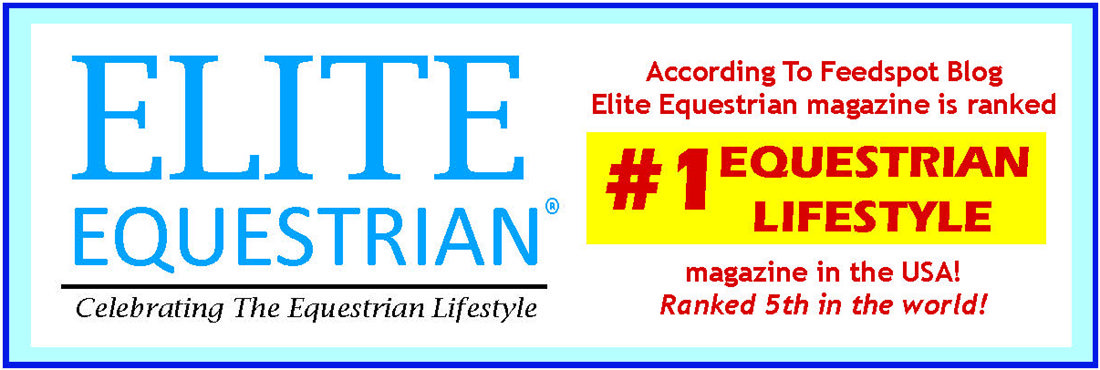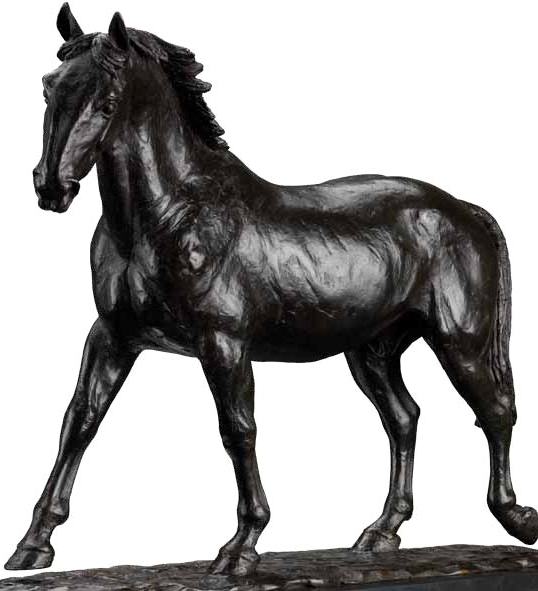
Camilla Le May: sculptor
Tell us about yourself…
I specialise in sculpting horses and other animals and am currently finishing my first monumental work, which was commissioned by the Royal Veterinary College – a life-size bronze of Sefton, the Household Cavalry horse, who survived the bomb in Hyde Park in 1982.
I am honoured to have received various awards, including the British Sporting Art Trust sculpture award for my portrait of a polo pony, which became the trophy for the Best Thoroughbred Polo Pony of the Year, presented annually by Retraining of Racehorses at the Cartier International Polo tournament. My work is exhibited by established galleries and is bought by private collectors worldwide.
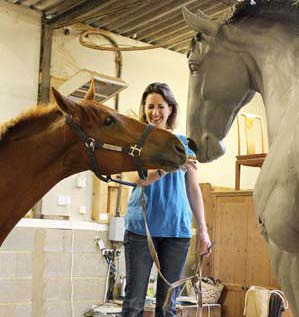
casting and her anatomy model Ed,
left, a bronze maquette of Sefton
Photo: Peter Greenhalf
How come art?
I first discovered sculpting at school and was hooked from about age 15. However, I did a degree in the history of art and continued sculpting as a hobby. Then, in my last year at uni, I won sponsorship to attend a Sculpture Masterclass at Edinburgh College of Art with the late Sir Eduardo Paolozzi. This was a turning point as he encouraged me to take sculpting seriously. So, after graduating, I started again, doing sculpture for a couple of years at art college. In 1999, after an inspiring trip to South Africa, I decided to leave
art college and just get going.
Why mainly horses and animals?
I grew up on my parent’s livestock farm and was put on a pony before I could walk – my mother bred thoroughbreds and riding and competing were central to our lives. On my first trip to South Africa (supported in part by a bursary award from the Society of Wildlife Artists), I was totally blown away by the African bush on safari. I had long been fascinated by Africa, its rich history, people, customs, landscapes and wildlife, but experiencing it secured this as an ongoing passion. I lived there for a good part of eight years where I sculpted the wildlife and set up a community art project.
Where did you study?
Edinburgh University, Chelsea College of Art and Middlesex University, but most relevant to my work were sculpture classes from a life model, where I learnt the importance of keen observation, form and anatomy. Additionally, two years working at a foundry gave me a good understanding of the lost wax process and as a result I do all the wax work, final chasing and many of the patinas myself.
What was a break through for you?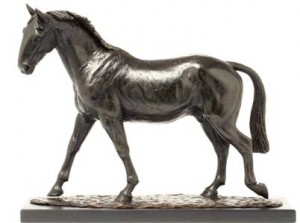
There have been a few: the Masterclass with Paolozzi, my first trip to South Africa, the support of a good gallery, where my work sold well from early on enabling me to continue casting new work in bronze. More recently the Sefton commission has been a huge privilege and opportunity for me. Alongside this I have been the RVC’s inaugural artist in residence, and as such I was able to attend dissections at the RVC, which helped in getting the anatomy right for Sefton.
How do you describe your work?
Realistic and detailed with anatomy and form being important as well as capturing the subject’s character, often through a typical pose or in dynamic movement. This is all best achieved through observation from life. I do commissions as well as limited editions for galleries.
Where can we find your work to buy?
Direct from me via my website www.camillalemay.com or Rountree Fine Art, London and in South Africa at the Everard Read Gallery, Johannesburg and Cape Town.
Does your work earn you a living? 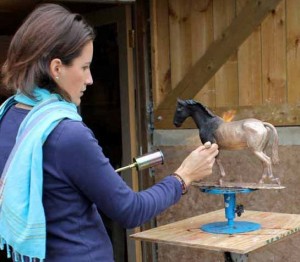
Yes, just about, but I have a long way to go, both in my work portfolio and in marketing.
Which artists do you admire?
Bugatti, John Skeaping, Liz Frink, Mark Coreth, Jonathan Kenworthy and others… and, of course, the greats – Rodin and Michelangelo.
What happens when a piece won’t come together?
I either work through this as often it does come right, or sometimes I will scrap it altogether. I learnt early on at school not to be too precious about my work after a couple of pieces blew up in the kiln! Things do sometimes go wrong and it can be better second time around.
Where do you get your inspiration?
Spending time in the field with my subjects, sculpting from life. I can get a better sense of form, anatomy and character from life, which you can not get from two-dimensional photos. It is also a wonderful experience working alongside animals, quietly observing and getting to know them. I am happiest when sculpting African wildlife in its natural environment and it is an absolute privilege to be able to do so.
What are your ambitions?
To do more larger scale pieces, to work towards a solo show and to spend more time in Africa.
http://www.camillalemay.com/blog/ http://www.camillalemay.com/
